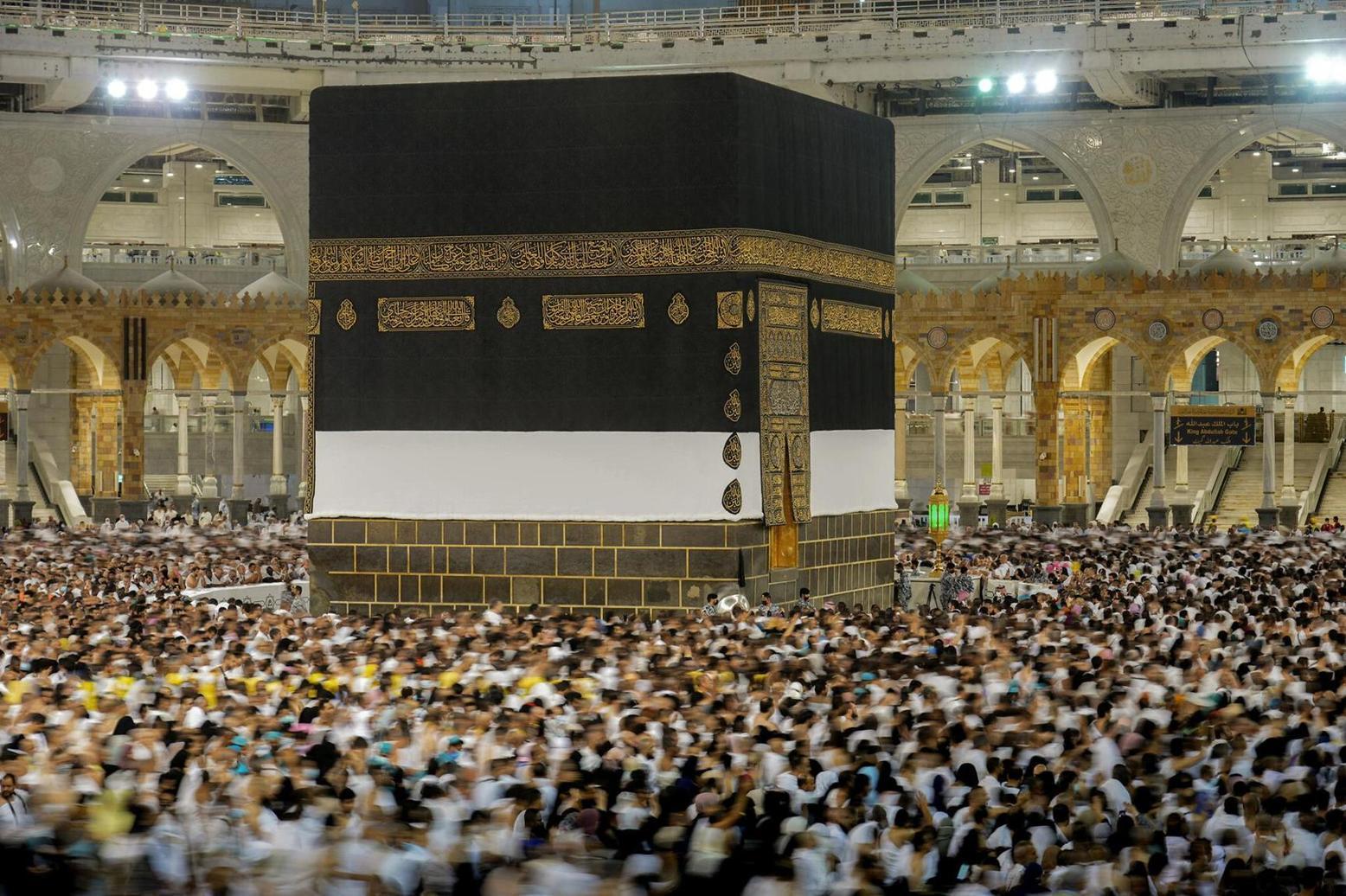Africa-Press – Ghana. Hajj is the sacred annual Islamic pilgrimage to the holy city of Mecca in Saudi Arabia.
It is one of the Five Pillars of Islam and a religious obligation that every adult Muslim must undertake at least once in their lifetime, provided they are physically and financially capable, and able to support their dependents during their absence.
The Five Pillars of Islam, Shahadah (declaration of faith), Salat (prayer), Zakat (almsgiving), Sawm (fasting during Ramadan), and Hajj (pilgrimage), form the foundation of a Muslim’s faith and practice.
Hajj represents a profound expression of devotion, humility, and unity before Allah (SWT). As the Prophet Muhammad (peace be upon him) said: “Whoever performs Hajj for the sake of Allah and does not utter any obscene speech or do any evil deed will go back free of sin as his mother bore him.”
Divine Command and Global Unity
Allah commands Muslims to perform the pilgrimage in the Qur’an (48:27): “Truly did Allah fulfil the vision
for His Messenger: you shall enter the Sacred Mosque, if Allah wills, with minds secure, heads shaved, hair cut short, and without fear…”
Each year, millions of Muslims from across the globe respond to this divine call.
Between 2000 and 2019, an average of over 2.2 million Muslims attended Hajj annually, with about 1.56 million coming from outside Saudi Arabia. Over 1.3 million pilgrims are expected to participate in this year’s Hajj.
Historical Roots
While the current structure of Hajj was established by Prophet Muhammad (SAW), its origins trace back to Prophet Abraham (Ibrahim). Islamic tradition recounts that Abraham left his wife Hajar and infant son Ishmael in the barren desert of Mecca.
In a desperate search for water, Hajar ran seven times between the hills of Safa and Marwah, an act later memorialized in the ritual of Sa’ay. By divine mercy, water sprang forth beneath Ishmael’s foot, now known as the sacred Zamzam well.
Later, Abraham and Ishmael were commanded to build the Kaaba, the sacred house of worship, and
invite humanity to pilgrimage. These foundational events are mentioned in Qur’an (2:124–127) and (22:27–30).
During the pre-Islamic era (Jahiliyya), the Kaaba was defiled by pagan idols. In AD 630, Prophet Muhammad (SAW) purified the sanctuary and rededicated it to the worship of Allah. In AD 632, during his first and final pilgrimage, the Prophet instructed his followers on the rites of Hajj, thereby institutionalizing it as a core Islamic act of worship.
The Timing of Hajj
Hajj takes place during Dhul Hijjah, the 12th and final month of the Islamic lunar calendar. It lasts for approximately five to six days, beginning on the 8th of Dhul Hijjah. Due to the lunar nature of the Islamic calendar, the Gregorian dates for Hajj shift each year.
In 2025, Hajj will take place from June 4 to June 9.
The Rites of Hajj
1. Ihram
Pilgrims enter a sacred state called Ihram at designated boundaries called Miqat. Men wear two white seamless cloths, one around the waist, the other over the shoulder, while women wear modest clothing that meets Islamic standards.
In this state, pilgrims must abstain from certain
actions, such as grooming, marital relations, and using perfume, symbolizing equality, humility, and detachment from worldly concerns.
2. Tawaf and Sa’ay
Upon reaching the Grand Mosque in Mecca, pilgrims perform Tawaf, which is circling the Kaaba seven times counterclockwise. It is followed by two Raka’at of prayer near the Station of Abraham (Muqam Ibrahim) and drinking from the Zamzam well.
They then perform Sa’ay, running or walking seven times between the hills of Safa and Marwah, commemorating Hajar’s search for water.
3. Mina (8th Dhul Hijjah)
Pilgrims travel to Mina and spend the day in prayer.
4. Arafat (9th Dhul Hijjah)
On the Day of Arafah or Hajj, pilgrims gather on the plains of Arafat, 20 km from Mecca. This is the most important day of Hajj. They pray, reflect, and seek forgiveness.
Missing Arafat invalidates the pilgrimage. After sunset, pilgrims head to Muzdalifah, where they combine the Maghrib and Isha prayers and collect pebbles for the next day’s rites.
5. Stoning the Devil (10th Dhul Hijjah)
At Jamarat in Mina, pilgrims perform Ramy al-Jamarat by throwing seven pebbles at the largest of three pillars symbolizing Satan’s temptations. This act recalls Abraham’s rejection of the devil’s whispers.
6. Sacrifice and Hair Cutting
Pilgrims then perform an animal sacrifice (or purchase a voucher), in remembrance of Abraham’s willingness to sacrifice his son. The meat is distributed to the poor worldwide. Men shave their heads or trim their hair, while women cut a small portion, signifying spiritual renewal.
Pilgrims then return to Mecca to perform Tawaf al-Ifadah, another essential circumambulation of the Kaaba.
7. Days of Tashreeq (11th –13th Dhul Hijjah)
Pilgrims return to Mina and continue stoning all three pillars over the next two days. They may leave on the 12th or stay until the 13th, repeating the stoning ritual before returning to Mecca.
8. Farewell Tawaf
Before departing Mecca, pilgrims perform a final Tawaf al-Wadaa, a farewell circumambulation of the Kaaba, marking the completion of Hajj.
Spiritual and Physical Journey
Hajj is both a spiritual odyssey and a test of endurance. Pilgrims walk between 5 to 15 kilometers per day, making physical preparation vital. Despite the hardships, the pilgrimage offers unparalleled spiritual rewards.
In essence, Hajj represents a journey of the soul. It is a call to humility, unity, and the worship of Allah (SWT), offering believers the chance to be reborn spiritually. As Prophet Muhammad (SAW) said: “An accepted Hajj has no reward except Paradise.”
Source: Ghana News Agency
For More News And Analysis About Ghana Follow Africa-Press







